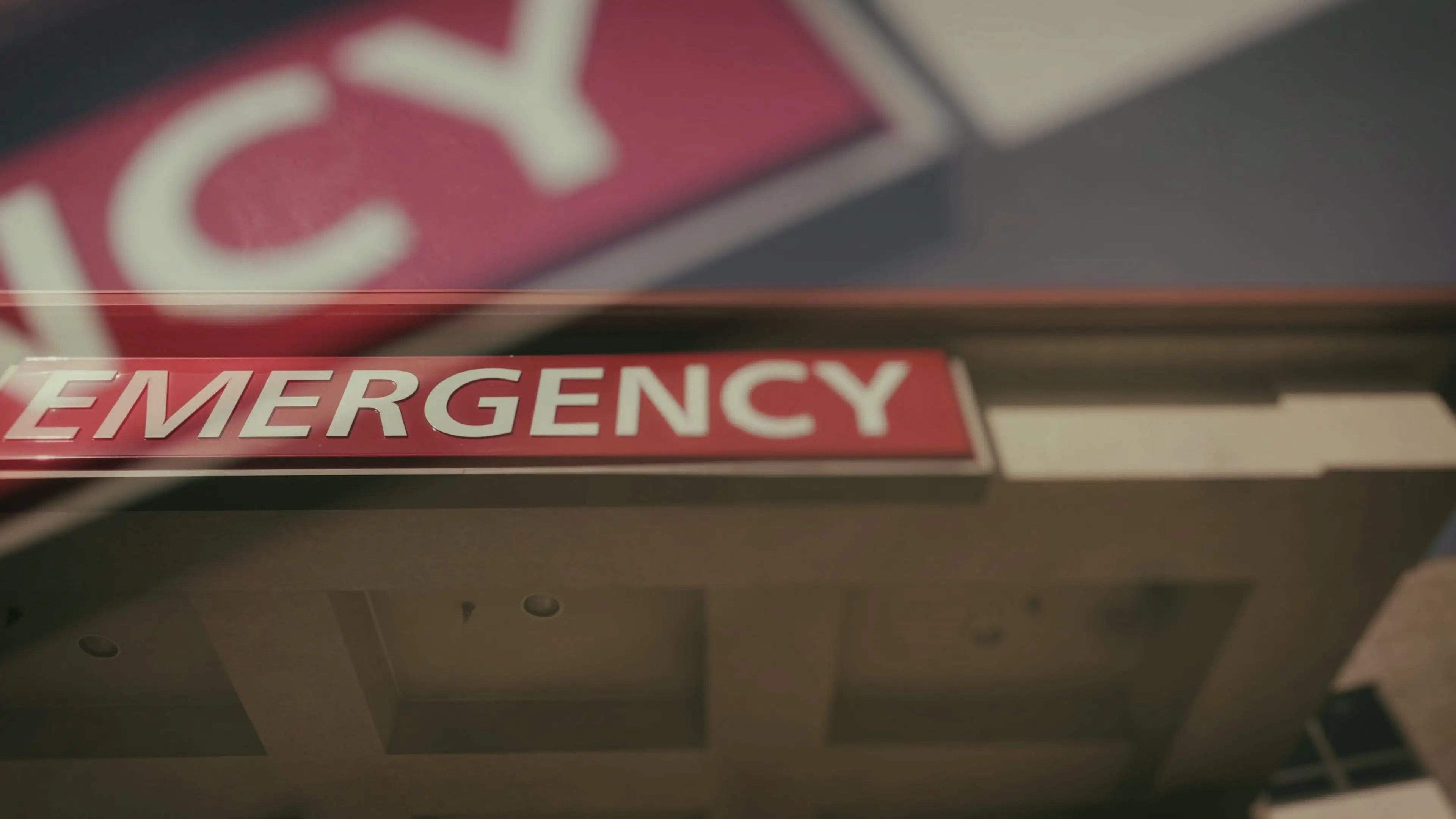Philadelphia Emergency Room Errors Lawyer
When someone visits an emergency room, they do so because they are experiencing a medical crisis that requires immediate attention. Patients trust that doctors, nurses, and other medical professionals will act quickly and competently to diagnose and treat their conditions. However, emergency rooms are fast-paced environments where mistakes are more common than they should be. These errors, whether due to misdiagnosis, medication mistakes, or failure to treat, can lead to devastating consequences, including long-term injuries, severe complications, or even wrongful death. That’s where our experienced Philadelphia emergency room errors lawyer steps in.
At Fulginiti Law, we are committed to representing individuals and families who have suffered due to medical negligence in emergency rooms. We understand that ER malpractice can cause overwhelming emotional, physical, and financial distress. Our legal team is here to provide the support, guidance, and aggressive representation you need to hold hospitals and medical professionals accountable for their mistakes.
If you or a loved one has been a victim of emergency room negligence, you do not have to face this battle alone. Our firm is ready to help you understand your legal rights, file a claim, and fight for the compensation you deserve.
What Qualifies as Emergency Room Malpractice?
Misdiagnosis or Failure to Diagnose
One of the most common forms of ER malpractice is the failure to diagnose or misdiagnosis of a serious condition. Many medical emergencies, such as heart attacks, strokes, and internal bleeding, require immediate intervention. If a doctor misinterprets a patient’s symptoms or dismisses their concerns, the delay in treatment can lead to permanent damage or even death. Patients who are mistakenly sent home may deteriorate rapidly, suffering from preventable complications that could have been avoided with timely and accurate medical attention.
Delayed or Denied Treatment
Overcrowded ERs and poor hospital management can result in dangerously long wait times, preventing critically ill patients from receiving the urgent care they need. Delays in treating conditions such as infections, head injuries, and respiratory distress can significantly increase the risk of long-term harm or fatality.
Medication Errors
Emergency rooms are high-pressure environments where medication errors are alarmingly common. Patients may be given the wrong drug, an incorrect dosage, or a medication they are allergic to due to miscommunication among hospital staff. These errors can result in severe allergic reactions, dangerous drug interactions, or overdoses that put a patient’s life at risk.
Premature Discharge
In an attempt to free up space for incoming patients, some hospitals discharge individuals too soon without a thorough evaluation. If a doctor fails to recognize a serious underlying condition and sends a patient home prematurely, that individual may suffer severe consequences due to a lack of necessary treatment.
Failure to Order Proper Tests or Misreading Results
Doctors rely on imaging scans, blood tests, and other diagnostic tools to make informed medical decisions. If a physician fails to order the appropriate tests or misreads test results, a critical illness or injury may go unnoticed, leading to further harm.
If you or a family member has suffered because of any of these forms of ER malpractice, Fulginiti Law’s Philadelphia emergency room errors lawyer is here to fight for your rights. We have the experience, resources, and dedication needed to hold negligent hospitals and medical professionals accountable.
Who Can Be Held Liable for Emergency Room Negligence?
Emergency Room Doctors and Medical Staff
Doctors, nurses, and medical assistants working in the ER are expected to provide competent, timely care. If they fail to diagnose a condition, make a treatment error, or neglect a patient’s needs, they can be held responsible for medical negligence.
Hospitals and Medical Facilities
Hospitals and emergency centers may be liable for systemic issues that lead to malpractice, such as:
- Understaffing, which can delay critical care
- Inadequate training of ER staff
- Failing to maintain proper medical records
- Overcrowded emergency rooms that prevent timely treatment
Independent Medical Contractors
Many emergency room doctors are independent contractors rather than direct employees of the hospital. If an independent physician makes a medical error, they may be sued individually rather than the hospital itself. Understanding these distinctions is essential when determining the best course of legal action.
At Fulginiti Law, we thoroughly investigate every aspect of a malpractice claim to identify all responsible parties and pursue the strongest possible case for our clients.
Filing an Emergency Room Malpractice Lawsuit
Proving Emergency Room Negligence
To successfully pursue an ER malpractice claim, several key legal elements must be demonstrated:
- Duty of Care – The hospital or ER staff had a legal obligation to provide appropriate medical care.
- Breach of Duty – The healthcare provider failed to meet the expected medical standard.
- Causation – The error directly resulted in harm, whether in the form of an injury, worsened medical condition, or long-term complications.
- Damages – The patient suffered physical, emotional, and financial losses.
How Fulginiti Law Can Help
At Fulginiti Law, we handle all aspects of medical malpractice lawsuits, from gathering medical records and consulting expert witnesses to negotiating settlements and representing clients in court. Our legal team works tirelessly to ensure that our clients receive the justice and compensation they deserve.
Compensation for ER Malpractice Victims
Medical Expenses
Victims of emergency room malpractice may be eligible for financial compensation to cover all past and future medical expenses, including hospital stays, surgeries, rehabilitation, and prescription medications.
Lost Wages and Loss of Future Earnings
If your injuries prevent you from returning to work, you may be entitled to compensation for lost wages. For those who suffer permanent disabilities or long-term health complications, compensation may also include lost earning capacity.
Pain and Suffering
Pain and suffering damages address the physical pain, emotional distress, and mental anguish caused by medical negligence. These damages are critical in recognizing the non-economic impact of malpractice on a victim’s life.
Wrongful Death Compensation
Families who have lost a loved one due to emergency room malpractice may also pursue wrongful death damages, covering funeral expenses, loss of companionship, and other hardships.
At Fulginiti Law, we fight aggressively to secure the maximum compensation for our clients, ensuring that they receive the financial support they need to move forward.
Frequently Asked Questions (FAQ) | Emergency Room Malpractice
How do I know if I have a case for emergency room malpractice?
If you experienced harm due to a medical error in the emergency room, you may have a case for malpractice. Common signs include misdiagnosis, delayed treatment, medication errors, premature discharge, or a failure to provide necessary care. To determine if you have a valid claim, an experienced malpractice attorney will review your medical records, consult experts, and assess whether the ER staff deviated from standard medical practices.
What are common types of emergency room malpractice?
Emergency room malpractice can take many forms, including failure to diagnose a serious condition, delayed or denied treatment, medication errors, surgical mistakes, and discharging a patient too soon. Cases often involve misdiagnosed heart attacks, strokes, infections, or brain injuries that could have been treated if caught in time. Any medical negligence that results in harm or worsens a patient’s condition may be considered malpractice.
Who can be held responsible for emergency room malpractice?
Liability for emergency room malpractice can fall on multiple parties, including ER doctors, nurses, hospital staff, or the hospital itself. If an individual healthcare provider made a mistake, they may be personally responsible. If the hospital was negligent in staffing, training, or maintaining proper procedures, the facility may also be held liable. In some cases, third-party contractors, such as radiologists or specialists, may be responsible if they misread test results or failed to provide proper care.
How much compensation can I recover in an ER malpractice case?
The amount of compensation in an emergency room malpractice case depends on several factors, including the severity of the injury, medical costs, lost wages, and pain and suffering. Victims may be entitled to damages for medical expenses, rehabilitation costs, lost income, future lost earnings, emotional distress, and disability. If a loved one died due to ER negligence, the family may pursue a wrongful death claim, which can include compensation for funeral costs, loss of companionship, and other related damages.
How long do I have to file an emergency room malpractice lawsuit?
The time limit for filing a malpractice lawsuit, known as the statute of limitations, varies by state. In many states, victims have between one to three years from the date of the malpractice or the discovery of the injury to file a claim. Certain exceptions may extend or shorten this time frame, such as cases involving minors or situations where the negligence was not immediately apparent. Consulting an Philadelphia emergency room errors lawyer as soon as possible ensures that you do not miss any legal deadlines.
Contact Fulginiti Law Today
If you or a loved one has been harmed due to emergency room malpractice, it is crucial to take action as soon as possible. Medical malpractice claims are subject to strict legal deadlines, known as statutes of limitations, which vary by state. Failing to file within the required time frame can prevent you from recovering compensation.
At Fulginiti Law, we offer free, no-obligation consultations to discuss your case and legal options. Our dedicated Philadelphia emergency room errors lawyer will carefully review the details of your situation, answer your questions, and explain the next steps in seeking justice. Contact us today to schedule a free case evaluation.



